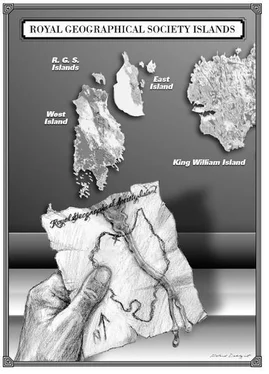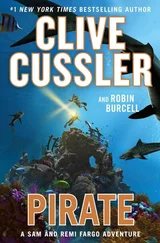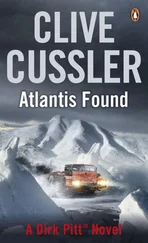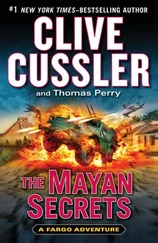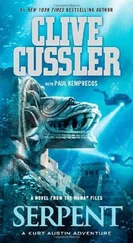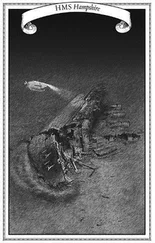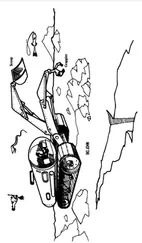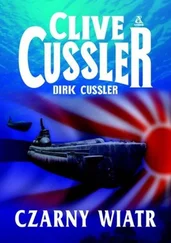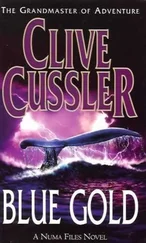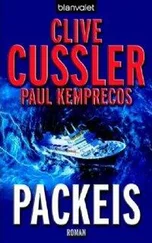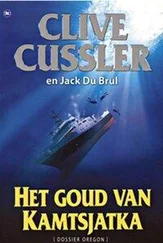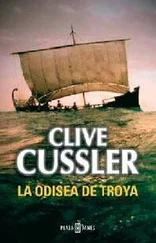“There’s a notation that Franklin died in 1847, but it doesn’t say why,” Loren read.
“The note raises more questions than answers. They were tantalizingly close to transiting the worst section of the passage but may have been caught by an exceedingly short summer, and the ships probably broke up in the ice.”
Pitt found a map in the book, which showed the area of Franklin’s demise. The point where his ships were presumed abandoned was less than a hundred miles from Adelaide Peninsula.
“The ruthenium found in the region was referred to as Black Kobluna,” Pitt said, searching for a potential geographic clue on the chart.
“Kobluna. That’s an Inuit word,” Perlmutter said, pulling out the crudely bound manuscript. Opening the ancient parched papers, Loren saw that the entire document was handwritten.
“Yes,” Pitt answered. “It is an Inuit term for ‘white man.’ ”
Perlmutter rapped a knuckle on the open document. “In 1860, a New York journalist named Stuart Leuthner sought to unravel the mystery of the Franklin Expedition. He traveled to the Arctic and lived in an Inuit settlement for seven years, learning their language and customs. He scoured the region around King William Island, interviewing every inhabitant he could find who had possibly interacted with Franklin or his crew. But the clues were few, and he returned to New York disillusioned, never finding the definitive answers he was looking for. For some reason he decided against publishing his findings and left his writings behind, to return to the Arctic. He took a young Inuit wife, then ventured into the wild to live off the land and was never heard from again.”
“Is that his journal from his time among the Inuit?” Pitt asked.
Perlmutter nodded. “I was able to acquire it at auction a few years back, picking it up at a reasonable price.”
“I’m amazed it was never published,” Loren said.
“You wouldn’t be if you read it. Ninety percent of it is a discourse on catching and butchering seals, building igloos, and surviving the boredom of the dark winter months.”
“And the other ten percent?” Pitt asked.
“Let us see,” Perlmutter smiled.
For the next hour, Perlmutter skimmed through the journal, sharing occasional passages where an Inuit described witnessing a sledge party on the distant shores of King William Island or noted the two large ships trapped in the ice. Near the very end of the journal, Leuthner interviewed a young man whose story put Loren and Pitt on the edge of their seats.
The account was from Koo-nik, a thirteen-year-old boy in 1849 when he went on a seal-hunting excursion with his uncle west of King William Island. He and his uncle had climbed a large hummock and found a massive boat wedged in a large ice floe.
“Kobluna,” the uncle had said, as they made their way to the vessel.
As they moved closer, they heard much yelling and screaming coming from the depths of the ship. A wild-eyed man with long hair waved for them to come alongside. With a freshly caught seal for barter, they were quickly invited onto the deck. Several more men appeared, dirty and emaciated, with dried blood covering their clothes. One of the men stared at Koo-nik, babbling incoherently, as two other men danced around the deck. The crew sang an odd chant, calling themselves the “men of blackness.” They all seemed possessed by evil spirits, Koo-nik thought. Frightened by the specter, Koo-nik clung to his uncle as the elder man traded the seal meat for two knives and some shiny silver stones that the Koblunas said had unique warming powers. The Koblunas promised more cutting tools and silver stones if the Inuit returned with more seal meat. Koo-nik left with his uncle but never saw the boat again. He reported that his uncle and some other men took a large number of seals to the boat a few weeks later and returned with many knives and a kayak filled with the Black Kobluna.”
“It had to have been the ruthenium,” Loren said excitedly.
“Yes, the Black Kobluna,” Pitt agreed. “But where did Franklin’s crew acquire it?”
“It might possibly have been discovered on one of the neighboring islands during a sledging excursion, while the ships were locked in the ice,” Perlmutter ventured. “Of course a mine could have been discovered much earlier in the expedition, anywhere from Greenland to Victoria Island, covering a distance of thousands of miles. Not much to go on, I’m afraid.”
“What I find strange is the behavior of the crew,” Loren noted.
“I heard a similar tale of some mill workers in South Africa going loony, which was blamed on possible exposure to ruthenium,” Pitt replied. “None of it makes sense, though, as there is nothing inherently dangerous about the mineral.”
“Perhaps it was just the horrible conditions they endured. Starving and freezing all those winters, trapped in a dark, cramped ship,” Loren said. “That would be enough to drive me crazy.”
“Throw in scurvy and frostbite, not to mention botulism brought on from a shoddy supply of tinned foods sealed with lead, and you would have plenty to test a man’s wits,” Perlmutter agreed.
“Just one of several unanswered questions associated with the expedition,” Pitt said.
“The account seems to confirm your trader’s story from the Miners Co-op,” Perlmutter noted.
“Maybe the answer to where the mineral came from still lies on the ship,” Loren suggested.
Pitt was already mulling the same thought. He knew that the frigid waters of the Arctic allowed for remarkable preservation of antiquities. The Breadalbane , an 1843 wooden ship sent on one of the Franklin rescue expeditions and crushed in the ice near Beechey Island, had recently been discovered fully intact, its masts still rising over the deck. That a clue to the source of the ruthenium might still exist on the ship was entirely possible. But which ship was it, and where was it located?
“There was no mention of a second ship?” he asked.
“No,” Perlmutter replied. “And the approximate location they provide is quite a bit farther south than where the Franklin ships were recorded to have been abandoned.”
“Maybe the ice drifted, moving them apart,” Loren suggested.
“Entirely plausible,” Perlmutter replied. “Leuthner has an interesting tidbit later in the journal,” he said, flipping a few pages forward. “A third-party Inuit claims to have seen one of the ships sink while the other one disappeared. Leuthner could never quite decipher the distinction from the Inuit.”
“Assuming it is one of the Franklin ships, it might well be critical to identify the vessel, in case the mineral was not brought aboard both Erebus and Terror ,” Pitt noted.
“I’m afraid Koo-nik never identified the ship. And both vessels were nearly identical in appearance,” Perlmutter said.
“But he said the crew had a name for themselves,” Loren said. “What did he call them, the ‘black men’?”
“The ‘men of blackness’ is how they were described,” Perlmutter replied. “Somewhat odd. I suppose they called themselves that for having survived so many dark winters.”
“Or there might be another reason,” Pitt said, a wide grin slowly spreading across his face. “If they were indeed the men of blackness, then they just told us which ship they served.”
Loren looked at him with a quizzical gaze, but the light went on for Perlmutter.
“But of course!” the big man roared. “It must be the Erebus . Well done, my boy.”
Loren looked at her husband. “What did I miss?”
“Erebus,” Pitt replied. “In Greek mythology, it is an underworld stopping place on the road to Hades. It is a place of perpetual darkness, or blackness, if you will.”
Читать дальше
